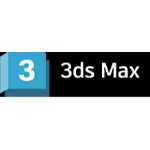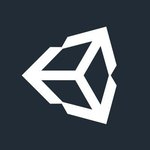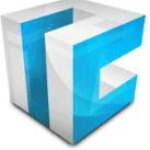List of Best 3D Rendering Software
Showing 10 of 21 productsBlender is a 3D animation software. Developed by a community of passionate artists and programmers, Blender offers a wide range of features and tools for creating stunning visual effects, 3D models, and animations. With its user-friendly interface an...Read Blender Reviews
3ds Max is a and versatile 3D modeling and animation software that has been a leading tool in the entertainment, architecture, and product design industries for over 30 years. From creating stunning visual effects to designing intricate 3D structures...Read 3ds Max Reviews
Unity is a game development platform that has brought countless digital worlds to life. With its intuitive interface and versatile features, Unity empowers creators of all levels to bring their ideas to reality. From immersive VR experiences to visua...Read Unity Reviews
D5 Render is the revolutionary software that brings your designs to life in stunning 3D visualization. With its user-friendly interface and powerful rendering capabilities, D5 Render allows you to create realistic and immersive environments for archi...Read D5 Render Reviews
Lumion is a 3D rendering software that allows architects, designers, and artists to bring their visions to life in stunning detail. With its user-friendly interface and powerful features, Lumion has quickly become the go-to tool for creating realisti...Read Lumion Reviews
KeyShot is a industry-leading rendering and animation software for creating beautiful, high-quality visuals. Created with a focus on simplicity and versatility, KeyShot allows users to bring their ideas to life through its intuitive interface and pow...Read KeyShot Reviews
Autodesk Maya is a 3D animation and modeling software used by professionals in the film, television, and gaming industries. With its powerful tools functionality, Maya allows artists to bring their ideas to life in stunning detail and realism. Get re...Read Autodesk Maya Reviews
MAXON Cinema 4D is a 3D modeling, animation, and rendering software used by creative professionals all over the world. With its intuitive interface, customizable tools, and dynamic workflows, it allows artists to bring their ideas to life with ease a...Read MAXON Cinema 4D Reviews
V-Ray is a rendering software that has revolutionized the world of 3D rendering. Its intuitive interface features make it a top choice among architects, designers, and visual effects artists. With its lightning-fast speed and stunning visual quality,...Read V-Ray Reviews
SelfCAD is a and user-friendly 3D modeling and designing software that is perfect for beginners and professionals alike. With its intuitive interface and extensive features, SelfCAD offers a seamless experience for creating and editing 3D designs. Wh...Read SelfCAD Reviews
- What Is 3D Rendering Software?
- Top Reasons Why Businesses Need 3D Rendering Software?
- What Are the Top Key Features of 3D Rendering Software?
- What Are the Top Benefits of 3D Rendering Software?
- What Are the Steps to Choose the Right 3D Rendering Software?
- What Are the Types of 3D Rendering Software for Different Industries?
- What Are the Technology Trends for Best 3D Rendering Software?
- What Are the Deployment Options for 3D Rendering Software?
What Is 3D Rendering Software?
3D rendering software refers to a category of computer applications designed to generate visually accurate representations by utilizing three-dimensional information derived from a given 3D model or scene. This particular software is commonly employed in the domains of 3D animation, architectural design, video game production, and medical imaging.
The technology provides the capability to generate a lifelike depiction of various items or scenes, regardless of their nature. The software application utilizes the provided three-dimensional data to convert it into a digital image that exhibits a high degree of realism and resemblance to real-life objects. The categorization of rendering software can be delineated into several distinct groups.
During the construction of a 3D animation, in real-time the best 3D rendering software is employed to facilitate the rapid visualization of modifications to the environment and effects by the designer. Offline rendering software is employed in the production of static images, specifically high-resolution images, for various applications including 3D animation, scenography, and industrial visualizations.
The utilization of 3D architectural rendering software has emerged as an indispensable asset within the animation and gaming sectors, facilitating the production of lifelike visuals within significantly reduced timeframes compared to previous methods.
Furthermore, its applications extend to several sectors such as architecture and medical imaging.
Top Reasons Why Businesses Need 3D Rendering Software?
1. The utilization of 3D rendering software enables organizations to generate inventive and visually captivating graphics for product packaging, advertising, and various other marketing materials.
2. The utilization of this technology enables the generation of intricate three-dimensional models that serve the purpose of concept exploration, product development, and prototype fabrication.
3. One of the benefits of utilizing visualization techniques in business is the ability to create visual representations of product designs before their physical construction, thereby facilitating the process of validation and testing.
4. The utilization of the best 3D rendering software facilitates the expeditious execution of iterative design modifications for both interior and external spaces.
5. The utilization of this technology enables the generation of lifelike virtual walkthroughs and three-dimensional animations before the physical construction of the respective environments.
6. The enhancement of sales, marketing, and training tools facilitates the provision of a heightened user experience through increased immersion.
7. The utilization of top 3D rendering software has been shown to effectively decrease both the time and expenses typically involved with various stages of product design, prototype, and production processes.
8. Collaboration is facilitated through the provision of simultaneous access to a project for numerous team members.
9. The capacity to generate photo-realistic representations from several perspectives confers a competitive edge to organizations in their product marketing endeavors.
10. The software aids enterprises in generating visually captivating designs for both print and broadcast media.
11. The utilization of this technology enables enterprises to replicate assembly procedures and evaluate the operational efficacy of their products.
12. The utilization of 3D model rendering software enables the production of visually intricate and high-quality visuals, which can be employed to present products in a detailed manner and facilitate virtual training sessions.
13. The utilization of this tool assists designers in the creation of authentic material textures and the implementation of realistic lighting effects.
14. The utilization of this technology aids businesses in the creation of highly precise scale replicas of their products.
15. The utilization of product design testing and validation before manufacturing aids organizations in mitigating the risks involved with this process.
What Are the Top Key Features of 3D Rendering Software?
The top key features of 3d rendering software include:
1. Ray-Tracing: The utilization of Ray-Tracing in the best 3D rendering software facilitates the generation of lifelike three-dimensional images by simulating the behavior of light beams as they interact with various objects within the depicted scene.
2. Photorealism: Photorealism facilitates the production of visually captivating and precise photographs in terms of their portrayal. The attainment of this objective is accomplished through the precise reconstruction and depiction of surfaces and illumination, resulting in a visually authentic appearance.
3. Material Simulation: This functionality enables the simulation of a diverse range of materials, including but not limited to wood, glass, metal, stone, and plastic. The inclusion of this element enhances the complexity and authenticity of a given situation.
4. Realistic Lighting: In the realm of top 3D rendering software, it is customary for such programs to provide users with an extensive array of lighting choices, thereby enabling them to replicate lifelike lighting scenarios.
5. Camera Control: Individuals can manipulate the camera's position, so exerting influence over the visual perspective of the situation.
6. Cutting Edge Rendering: Numerous 3D rendering software applications include advanced rendering effects, including volumetric lighting, global illumination, ambient occlusion, soft shadows, depth of field, and motion blur.
7. Flexibility: Users are able to tweak many parameters and apply personalized textures, lighting, and materials using 3D rendering tools, achieving a distinct visual appearance.
8. Variety of Output Options: Numerous 3D software programs provide users with a diverse range of output alternatives, encompassing high-resolution photos, dynamic animations, and interactive visual representations.
What Are the Top Benefits of 3D Rendering Software?
1. Increased Accuracy: The utilization of the best 3D rendering software enables the generation of visually realistic representations that accurately depict the intended scene. This methodology enables the generation of a precise depiction of the tangible product or surrounding context, which may afterward be utilized for comparison and soliciting constructive criticism before the commencement of manufacturing.
2. Cost-Effective: The cost associated with 3D images is notably lower in comparison to traditional photography, rendering it a very suitable option for the creation of marketing materials.
3. Flexibility: The utilization of 3D architectural rendering software enables users to make extensive modifications to various aspects of a scene, including texturing, lighting conditions, camera angles, and other features. This feature offers more adaptability in designing visual elements to cater to diverse applications.
4. Rapid Results: The utilization of 3D rendering enables the expeditious generation of outcomes, typically accomplished within a brief timeframe, generally measured in minutes. This feature can be particularly advantageous in expeditiously generating diverse recommendations or modifications to a given scene.
5. Environment Modeling: The utilization of 3D rendering enables the faithful reproduction of intricate surroundings, such as urban landscapes, which pose challenges for conventional photography.
6. Neatly Photographed Scenes: The utilization of 3D rendering software enables the production of photographs characterized by minimal noise and distortion, hence resulting in visually enhanced images with heightened clarity.
What Are the Steps to Choose the Right 3D Rendering Software?
1. Please ascertain your specific requirements and delineate the essential 3D rendering characteristics that are necessary for your project. This may encompass attributes such as photorealistic rendering capabilities, compatibility with diverse 3D modeling software, user-friendliness, platform optimization, and cost-effectiveness.
2. Conduct an investigation of the various software solutions now available for 3D rendering. Examine user feedback and do a comparative analysis of software functionalities.
3. Estimate the cost ascertain whether the software may be acquired through a one-time purchase or necessitates a subscription. It is important to consider supplementary expenses associated with the inclusion of additional features or plugins.
4. Test-drive the software acquire trial versions and conduct empirical evaluations. Examine how each entity fulfills the criteria established in the initial phase.
When making a decision, it is important to carefully evaluate the features, cost, and simplicity of use of several software options to determine which one is most suitable for your specific requirements.
What Are the Types of 3D Rendering Software for Different Industries?
A wide range of 3D rendering software options are currently accessible for implementation across many industries.
Several of the most prevalent varieties are as follows:
1. Architectural Design: Autodesk Revit, NickSketch, VectorWorks Architect
2. Visual Effects and Animation: Autodesk Maya, Autodesk 3DS Max, Blender
3. Industrial Design: SolidWorks, Pro/ENGINEER, CATIA V5
4. Product Design: Autodesk Alias, Rhinoceros 3D, Solid Edge
5. Web Design: Adobe After Effects, Cinema 4D
6. Games: Unity, Unreal Engine, CryEngine
7. 3D Printing and Prototyping: ZBrush, Meshmixer, TinkerCad
8. Architectural Visualization: Lumion, V-Ray, Enscape
What Are the Technology Trends for Best 3D Rendering Software?
The technology trends about the most effective 3D rendering software have seen a significant transformation in recent years. Significant progress has been made in the evolution of the best 3D rendering software, leading to enhanced user experiences and improved resource use.
Currently, the most widely utilized the top 3D rendering software comprises Unreal Engine, Unity, and Blender. Unreal Engine is commonly acknowledged as the predominant program utilized for the creation of three-dimensional visuals, and it encompasses an extensive array of tools and services that facilitate developers in attaining visually striking outcomes. The engine's evolution has resulted in substantial enhancements to its capabilities and features.
Unity is a widely utilized 3D rendering engine. The popularity of this engine has increased as a result of its user-friendly interface, comprehensive asset store, and extensive platform compatibility. Unity is renowned for its exceptional provision of assistance in the development of virtual reality encounters. The Blender software package, which is open-source and used for 3D purposes, has experienced significant expansion in its user community.
The software provides a wide range of tools, encompassing modeling and animation capabilities, and its interface is designed to be accessible, facilitating the initiation of novice users.
The following software tools are considered prominent in the field of 3D rendering in the year 2021. Given the progress made in graphics technologies, it is probable that this tendency will persist and expand in the foreseeable future.
What Are the Deployment Options for 3D Rendering Software?
The deployment options for 3D rendering software can exhibit variability contingent upon the specific software selected. However, some prevalent options can be identified, including:
• Software as a Service (SaaS) - The delivery of the best 3D rendering software occurs via the internet as a subscription-based service, allowing customers to utilize the program without the requirement of installing supplementary software.
• On-Premise Installation - The installation of the top 3D rendering software on personal PCs enables users to conveniently access the software using specialized gear.
• Cloud-Hosted Rendering - Cloud-hosted rendering is an economically advantageous approach for the process of 3D rendering. It allows users to transmit their rendering requests to a renderer located in the cloud, resulting in prompt rendering outcomes sent via the internet.
• Mobile Devices - Mobile devices, such as smartphones and tablets, provide users with the capability to access and utilize 3D rendering technology. Certain 3D model rendering software provides mobile applications that enable users to conveniently access the program's functionalities.










